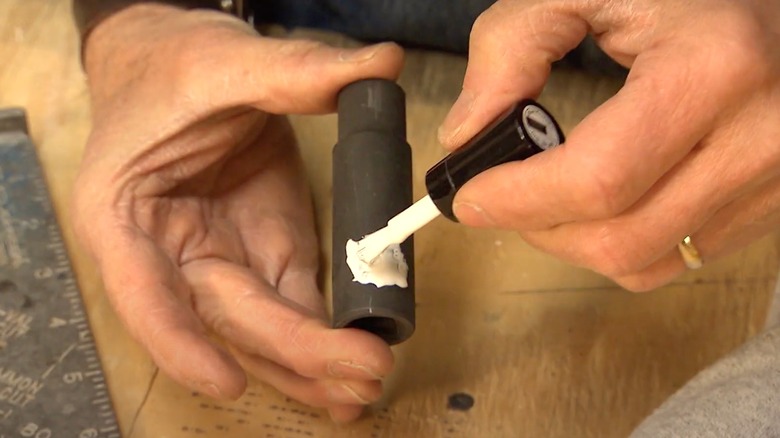Why You'll Want To Keep A Bottle Of Nail Polish In Your Tool Shed
Sometimes a good tool can be made even better with a little ingenuity. Add a brush head to a power drill bit, for example, and you've got yourself a thorough scrubbing tool. Hand tools can also be slightly improved upon — but with something as simple as white nail polish. Nail polish, as it turns out, is a perfect lacquer to highlight the tiny, etched measurement indicators on everything from socket sizes to gauges of adjustable tools and the gradation markings on squares. By making these numbers more visible, your tools instantly become easier to use (and probably to locate, too), hopefully making your DIY projects go a lot smoother.
It's not just as we get older that the tiny markings stamped onto tools become harder and harder to see; repairs or upgrades are often needed in areas with low or uneven lighting conditions, which can make it hard to discern whether we've got the right-sized tool. Rather than trying to add a legible label somewhere, which can wind up damaging the tool, interfering with its use, or losing its legibility after a while, it's much better to enhance the labels and numbers that were already provided by the manufacturer.
Highlight tool sizes with white nail polish
The process is simple. Roll your nail polish bottle between your palms or along your work surface for a few seconds to ensure the polish and smooth and not separated. Where you used to be told to shake well before each use to prevent the polish from separating, you shouldn't actually do this. It creates unwanted air bubbles, so rolling became the preferred method.
Then, unscrew the cap, and scrape off any excess polish against the top of the bottle so it drips back inside. Paint a couple of strokes over the entire area where the stamped numbers you're trying to amplify are, wait 30 to 45 seconds, and then wipe away the polish with a clean cloth. All that will remain is what's settled into the grooves of the gauge markings or delineations, making those numbers stand out clearly against the tool's metal. Your end result will exemplify why white is the perfect color to use for this hack.
If you're in the middle of this task, though, and accidentally leave the polish on too long, don't worry. If it's too dry when you go to wipe it away, traditional paint thinners you might already have on hand or even basic acetone — aka the central ingredient in nail polish remover — will do the trick. Put a small amount on a towel, and wipe the polish off. Once again, it should come off the tool's surface before reaching down into the etched numbers, saving your work. If it takes too much away, just wait for it to dry, and try again. Then, you can use your leftover nail polish to tackle loose screws around the house.
